Where do top prospects come from, you ask? Six of these 20 were first-round picks this past June in the draft, and 14 were first- or sandwich-round picks. Mixed in we also have two second-rounders and an 11th-rounder who was barely good enough to pitch for his college team but dominated Double-A in just his second full year in pro ball.
Editor's note: Age is the player's age as of July 1, 2017.
Top 100 prospects ranked 1-20 | 21-40 | 41-60 | 61-80 | 81-100 | Index
 100. Brandon Woodruff, RHP, Milwaukee Brewers
100. Brandon Woodruff, RHP, Milwaukee Brewers
Age: 24 (2/10/93) | B/T: L/R
Height: 6-4 | Weight: 215
Top level: Double-A | 2016: NR
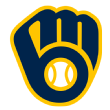 The Brewers took Woodruff in the 11th round in 2014 out of Mississippi State, where he threw all of 90 innings over three seasons for the Bulldogs, who must have had Spahn and Sain on their pitching staff to find no use for this guy. Woodruff was one of the minors' biggest breakout guys in 2016, starting out as a High-A repeater but ending up the Brewers' pitcher of the year after dominating the Double-A Southern League all summer.
The Brewers took Woodruff in the 11th round in 2014 out of Mississippi State, where he threw all of 90 innings over three seasons for the Bulldogs, who must have had Spahn and Sain on their pitching staff to find no use for this guy. Woodruff was one of the minors' biggest breakout guys in 2016, starting out as a High-A repeater but ending up the Brewers' pitcher of the year after dominating the Double-A Southern League all summer.
Woodruff has touched 98 mph but works more in the low- to mid-90s with good sink, generating a 50 percent ground-ball rate across all of last season, and an above-average slider that helped him finish fifth in the Southern League in strikeouts despite making only 20 starts there. He's a three-pitch guy with above-average control and a clean delivery that keeps him on line to the plate; given the Brewers' current rotation it seems very likely he'll get a chance to join it this season if he can survive the challenge of pitching in Colorado Springs.
 99. Robert Stephenson, RHP, Cincinnati Reds
99. Robert Stephenson, RHP, Cincinnati Reds
Age: 23 (9/24/93) | B/T: R/R
Height: 6-2 | Weight: 200
Top level: MLB | 2016: 31
 Stephenson has been on these annual rankings for about 15 years -- give or take a few -- and still qualifies because, to put it bluntly, he was so bad in 2016, walking way too many guys again in Triple-A and then serving up too many belt-high fastballs in the majors.
Stephenson has been on these annual rankings for about 15 years -- give or take a few -- and still qualifies because, to put it bluntly, he was so bad in 2016, walking way too many guys again in Triple-A and then serving up too many belt-high fastballs in the majors.
Although Stephenson has reached 100 mph in the past, he was pitching the mid-90s early in 2016 and had some starts where he was in the low 90s as well, but the quality secondary stuff was still there, including the split-change he has been using too often the past two seasons when he should have been working on fastball command.
If he were pitching like a guy with this stuff should be pitching, he'd be a top-25 prospect or, more likely, off the list because he'd have spent most of 2016 in the big leagues. It's up to him now to stop overusing the changeup and work on getting his fastball to the corners of the zone, because there are major-league opportunities in Cincinnati's rotation and bullpen for the taking this year.
 98. Sam Travis, 1B, Boston Red Sox
98. Sam Travis, 1B, Boston Red Sox
Age: 23 (8/27/93) | B/T: R/R
Height: 6-0 | Weight: 205
Top level: Triple-A | 2016: NR
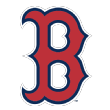 Travis was on track for a major-league call-up in 2016, but he tore his ACL -- as his former Indiana teammate Kyle Schwarber had done -- after 47 games in Triple-A, ending his season. Travis is a bit of a throwback as a first baseman, a guy who’s going to hit for average and doubles power but might get to only 12-15 homers a year. He has a clean, simple swing that should produce some line-drive power in time, although in 2016 he was putting the ball on the ground a little more than he should.
Travis was on track for a major-league call-up in 2016, but he tore his ACL -- as his former Indiana teammate Kyle Schwarber had done -- after 47 games in Triple-A, ending his season. Travis is a bit of a throwback as a first baseman, a guy who’s going to hit for average and doubles power but might get to only 12-15 homers a year. He has a clean, simple swing that should produce some line-drive power in time, although in 2016 he was putting the ball on the ground a little more than he should.
He's an above-average defender at first who might have been OK as a left fielder, but that's not an option in Boston given their other players and the difficulty of playing left at Fenway. I think Travis could be a Mark Grace sort of player, hitting for average with good OBPs and 30-40 doubles a year, an average to above-average regular at a position where the Red Sox might shortly have a need.
 97. Alex Kirilloff, OF, Minnesota Twins
97. Alex Kirilloff, OF, Minnesota Twins
Age: 19 (11/9/97) | B/T: L/L
Height: 6-2 | Weight: 195
Top level: Rookie | 2016: NE
 The Twins' first pick in the 2016 draft (15th overall), Kirilloff might have been a higher selection if he hadn't played his high school games in western Pennsylvania against weak competition. Kirilloff has a very easy, fluid swing, and can drive the ball to all fields, a strong indicator for future plus hit and power tools, although he struggled with pitch selection in his first exposure to pro ball, where the Twins sent him right to the advanced Appalachian League.
The Twins' first pick in the 2016 draft (15th overall), Kirilloff might have been a higher selection if he hadn't played his high school games in western Pennsylvania against weak competition. Kirilloff has a very easy, fluid swing, and can drive the ball to all fields, a strong indicator for future plus hit and power tools, although he struggled with pitch selection in his first exposure to pro ball, where the Twins sent him right to the advanced Appalachian League.
Kirilloff played center and pitched in high school, but will end up a right fielder by the time he reaches the upper minors, where he's likely to be a plus defender between his range and his arm, although the Twins often move their future corner guys around and let them play some center and even first base. He has more realistic offensive upside than anyone else in their system, which means he has a chance to be the Twins' best prospect in a year, depending on how well he adjusts his approach at the plate.
 96. Jeff Hoffman, RHP, Colorado Rockies
96. Jeff Hoffman, RHP, Colorado Rockies
Age: 24 (1/8/93) | B/T: R/R
Height: 6-5 | Weight: 225
Top level: MLB | 2016: 90
 Hoffman is a great prospect, but one who just might be in the wrong organization for his repertoire and style of pitching. He's an outstanding athlete gifted with a great arm, throwing 92-97 mph pretty easily even after Tommy John surgery. But his delivery lacks deception and the pitch is true, so when he got to the majors hitters squared it up, putting it in play three times as often as they swung and missed at it. In many environments, that might be OK, but Coors Field punishes balls put in play, so Hoffman might need to pitch somewhat backward.
Hoffman is a great prospect, but one who just might be in the wrong organization for his repertoire and style of pitching. He's an outstanding athlete gifted with a great arm, throwing 92-97 mph pretty easily even after Tommy John surgery. But his delivery lacks deception and the pitch is true, so when he got to the majors hitters squared it up, putting it in play three times as often as they swung and missed at it. In many environments, that might be OK, but Coors Field punishes balls put in play, so Hoffman might need to pitch somewhat backward.
He can show you an average or better curveball, and above-average changeup, although nothing he threw was very effective in the big leagues last year. There's a mid-rotation starter in here somewhere, but he needs to make a significant adjustment -- it could be trying a two-seamer, or changing his pitching approach -- because the formula he used to get to the majors is going to hinder him from succeeding there.
 95. Zack Collins, C, Chicago White Sox
95. Zack Collins, C, Chicago White Sox
Age: 22 (2/6/95) | B/T: L/R
Height: 6-3 | Weight: 220
Top level: High-A | 2016: NE
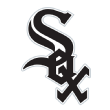 The White Sox think Zack Collins can catch, and sent him out as a catcher right to the High-A Carolina League after drafting him out of the University of Miami with the 10th overall pick, making him one of only two college bats from last year's draft to go straight to High-A.
The White Sox think Zack Collins can catch, and sent him out as a catcher right to the High-A Carolina League after drafting him out of the University of Miami with the 10th overall pick, making him one of only two college bats from last year's draft to go straight to High-A.
I don't think Collins, already big for the position and not that agile, will make it to the majors as a catcher, but I do think he can really hit, and do so with power and some on-base ability, so it might not matter in the end. When Collins keeps his swing controlled, he's short to the zone and explodes quickly from where he loads, with plenty of natural angle in his finish to hit for power, but he does get a little homer-happy and then his swing becomes unnecessarily long.
His pro debut went better than anyone could have expected, with a lot of strikeouts but a .258/.418/.467 line that would have placed him among the league leaders in OBP and slugging. There is absolutely some extra value in having this kind of bat behind the plate, but if Collins' bat is as advanced as I think it is, he might hit his way off the position this year.
 94. Luis Castillo, RHP, Cincinnati Reds
94. Luis Castillo, RHP, Cincinnati Reds
Age: 24 (12/12/92) | B/T: R/R
Height: 6-2 | Weight: 170
Top level: Double-A | 2016: NR
 Traded just last week from the Marlins to the Reds in the deal for Dan Straily -- who, it bears mentioning, was available to all teams for nothing just a year ago -- Castillo was Miami's best pitching prospect and adds to the Reds' stable of potential starters. Castillo is really a two-pitch starter now, touching 100 mph with his fastball, with a plus changeup, but he lacks a truly average third pitch, relying on a fringy slider. He walked only four percent of batters faced in High-A before a three-start promotion to Double-A, where he walked seven guys in 14 innings.
Traded just last week from the Marlins to the Reds in the deal for Dan Straily -- who, it bears mentioning, was available to all teams for nothing just a year ago -- Castillo was Miami's best pitching prospect and adds to the Reds' stable of potential starters. Castillo is really a two-pitch starter now, touching 100 mph with his fastball, with a plus changeup, but he lacks a truly average third pitch, relying on a fringy slider. He walked only four percent of batters faced in High-A before a three-start promotion to Double-A, where he walked seven guys in 14 innings.
His delivery works for a starter, and it's possible he can be a No. 4 as-is, even if the slider never gets much beyond average. Guys with arms this quick should have better sliders than that. Perhaps that's the best-case scenario or 90th percentile outcome for Castillo -- that the slider becomes a 55 or a 60, and then he's a No. 3 or better. To get him for a guy who couldn't find a job 12 months earlier was a nice bit of work by the Reds' front office.
 93. A.J. Puk, LHP, Oakland Athletics
93. A.J. Puk, LHP, Oakland Athletics
Age: 22 (4/25/95) | B/T: L/L
Height: 6-7 | Weight: 220
Top level: Short-season A-ball | 2016: NE
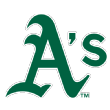 Puk was in the conversation for the first pick in the draft for much of his junior year at Florida but ended up sliding to Oakland's pick at No. 6 overall because ... well, I think its because he just didn't pitch that well, although that could hardly have been a surprise to anyone who has followed him since high school. Puk is size and stuff over performance, a big chunk of raw material for player development to mold into a pitcher.
Puk was in the conversation for the first pick in the draft for much of his junior year at Florida but ended up sliding to Oakland's pick at No. 6 overall because ... well, I think its because he just didn't pitch that well, although that could hardly have been a surprise to anyone who has followed him since high school. Puk is size and stuff over performance, a big chunk of raw material for player development to mold into a pitcher.
Puk is usually clocked throwing 93-97 mph with a power mid-80s curveball that only has fair rotation, plus a handful of changeups that are average when he doesn't overthrow them. His arm works, with good extension out front, but he doesn't seem to repeat it very well, and even though he was a decent hitter in high school he's not a great athlete.
The A's bet on some upside here -- a huge, strong lefty with a plus fastball and some semblance of secondary stuff -- but I don't think he's the fast-moving college starter you'd normally expect in a top 10 pick. You could dream on a No. 2 starter upside, but I think a good No. 4 is more realistic, and you hope your minor league coaches can coax more out of him over time.
 92. Christin Stewart, OF, Detroit Tigers
92. Christin Stewart, OF, Detroit Tigers
Age: 23 (12/10/93) | B/T: L/R
Height: 6-0 | Weight: 205
Top level: Double-A | 2016: NR
 Stewart is a power and patience guy, limited to left field, but showing a real ability to drive the ball to all fields that raises him above all of the dead-pull/low-contact guys who populate the low minors. The Tigers took Stewart in the supplemental round in 2015 out of Tennessee, where he hadn't produced at all until a junior-year breakout where he cut his strikeout rate and hit 15 homers to rank him among the SEC's top five in that category.
Stewart is a power and patience guy, limited to left field, but showing a real ability to drive the ball to all fields that raises him above all of the dead-pull/low-contact guys who populate the low minors. The Tigers took Stewart in the supplemental round in 2015 out of Tennessee, where he hadn't produced at all until a junior-year breakout where he cut his strikeout rate and hit 15 homers to rank him among the SEC's top five in that category.
Stewart has a much shorter swing than you'd expect if you looked at his stat line first, getting the bat to the zone quickly with a little drift out over his front side that might cause some trouble when he faces pitchers who can locate their off-speed stuff, but he has an idea of the strike zone and continues to work on pitch selection. His best position is probably the batter's box, as he's not going to wow you in left field, but he might be able to work himself up to something near average.
There's real 30-homer potential here, although it might be a .240/.350/.450 kind of line given his contact rates in the minors and his need to stay back in the box.
 91. Stephen Gonsalves, LHP, Minnesota Twins
91. Stephen Gonsalves, LHP, Minnesota Twins
Age: 22 (7/8/94) | B/T: L/L
Height: 6-5 | Weight: 213
Top level: Double-A | 2016: NR
 The Twins have done an outstanding job developing Gonsalves, who came out of high school with a 45 fastball, a plus changeup, and -- no exaggeration -- a 30 breaking ball. I did not see how you could project him to become a major-league starter with no apparent ability to spin the ball, but the Twins saw something I didn't, and he's on the cusp of earning a big-league rotation job.
The Twins have done an outstanding job developing Gonsalves, who came out of high school with a 45 fastball, a plus changeup, and -- no exaggeration -- a 30 breaking ball. I did not see how you could project him to become a major-league starter with no apparent ability to spin the ball, but the Twins saw something I didn't, and he's on the cusp of earning a big-league rotation job.
Gonsalves still has a 45 fastball and a plus changeup, although he also has some deception in his delivery for the fastball to play up, but he has added a cutter now that has a chance to end up an average pitch, thrown at 84-87 mph. It's below average at the moment, but he just started throwing it within the past year, and I would bet on that over the big 72 mph curveball he babies to get it to break correctly.
I worry a little about the jump in his walk rate in Double-A, just because he can't start pitching away from contact, but other than that his performance in the minors is irreproachable: 368⅓ pro innings, 396 strikeouts and a 2.13 career ERA. I think he's a fourth starter in the majors, probably not more, but also probably not less, although if that cutter becomes a legitimate third pitch for him, I could still be underestimating the guy -- just as I did in 2013.
 90. Jahmai Jones, OF, Los Angeles Angels
90. Jahmai Jones, OF, Los Angeles Angels
Age: 19 (8/4/97) | B/T: R/R
Height: 6-0 | Weight: 215
Top level: Low-A | 2016: NR
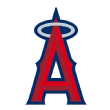 The one real beacon of light in the Angels’ farm system -- new slogan for 2017: “We’re not the worst!” -- Jones played extremely well as an 18-year-old in the advanced Rookie Pioneer League before a late-season cup of coffee in the Midwest League, where he’ll probably spend all of this season.
The one real beacon of light in the Angels’ farm system -- new slogan for 2017: “We’re not the worst!” -- Jones played extremely well as an 18-year-old in the advanced Rookie Pioneer League before a late-season cup of coffee in the Midwest League, where he’ll probably spend all of this season.
Jones is a power/speed guy who started to mature physically this year, filling out his six-foot frame and looking more like a young linebacker now than he did as a wiry, 17-year-old high school senior. Jones is a power/speed candidate who projects to 60 power and has a pretty good idea at the plate already for someone so young. He's a a potential 20-homer/20-steal candidate with something like a one in three chance to stay in center field, depending on how big he gets.
The common refrain about Jones going back to high school is what an incredible kid he is, both in work ethic and in attitude, which gives the Angels a lot of optimism about his ability to make adjustments and deal with adversity whenever it comes. The Angels haven’t produced many position players of their own since Mike Trout reached the majors in 2011 -- Kole Calhoun and C.J. Cron and that’s probably it -- but Jones gives them not just a new top-100 prospect, but a guy with the upside of being more than an average regular.
 89. Jack Flaherty, RHP, St. Louis Cardinals
89. Jack Flaherty, RHP, St. Louis Cardinals
Age: 21 (10/15/95) | B/T: R/R
Height: 6-4 | Weight: 205
Top level: High-A | 2016: 83
 Flaherty came from the same Los Angeles-area prep school as Lucas Giolito, Max Fried, and now fellow Cardinal farmhand Austin Wilson (selected in the minor league Rule 5 draft) and signed an over-slot deal with the Cards as a supplemental pick in the 2014 draft.
Flaherty came from the same Los Angeles-area prep school as Lucas Giolito, Max Fried, and now fellow Cardinal farmhand Austin Wilson (selected in the minor league Rule 5 draft) and signed an over-slot deal with the Cards as a supplemental pick in the 2014 draft.
He’s always been a command and control guy but saw his stuff tick up a little in 2016, while his command wavered just a little bit. Flaherty mostly pitches at 90-94 mph with an average curveball and changeup, but late in 2016 saw his fastball creep up to 93-96. In general he was better at getting the ball down in the zone, bumping his ground-ball rate up from 38 to 49 percent year-over-year.
He’s still learning the craft of pitching, having both played third base and pitched in high school, with limited innings behind him. But he has all the elements you’d want to see in a 200-inning, mid-rotation starter. He just needs experience and some physical maturity to be ready for a major-league role by 2019.
 88. Justus Sheffield, LHP, New York Yankees
88. Justus Sheffield, LHP, New York Yankees
Age: 21 (5/13/96) | B/T: L/L
Height: 5-10 | Weight: 195
Top level: Double-A | 2016: NR
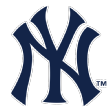 Sheffield went to the Yankees in the Andrew Miller trade, which netted New York two top-100 prospects and filled a specific gap in the Yanks’ system for an upper-level left-handed starting pitcher prospect. Sheffield is a little undersized but is an excellent athlete and works from 92-95 mph. He complements that with a present plus changeup and fringy breaking ball, repeating his delivery well but occasionally slipping into a tendency to overthrow.
Sheffield went to the Yankees in the Andrew Miller trade, which netted New York two top-100 prospects and filled a specific gap in the Yanks’ system for an upper-level left-handed starting pitcher prospect. Sheffield is a little undersized but is an excellent athlete and works from 92-95 mph. He complements that with a present plus changeup and fringy breaking ball, repeating his delivery well but occasionally slipping into a tendency to overthrow.
He threw well for the Yankees’ High-A affiliate after the trade and made one start in Double-A against the powerful Reading Fightin’ Phils lineup, punching out nine of the 19 batters he faced. So he’ll start 2017 in that higher level even though he doesn’t turn 21 until May. His stuff right now would play in the majors, although the lack of an average breaking ball limits his ceiling. If that doesn’t change, he should end up an average major league starter, with the potential for more if he develops a better third pitch.
 87. Kohl Stewart, RHP, Minnesota Twins
87. Kohl Stewart, RHP, Minnesota Twins
Age: 22 (10/7/94) | B/T: R/R
Height: 6-3 | Weight: 195
Top level: Double-A | 2016: 53
 Stewart was the fourth overall pick in 2013, but even three years into his pro career, the 22-year-old right-hander is still making the mental transition to full-time pitcher from someone who was mostly a quarterback in high school.
Stewart was the fourth overall pick in 2013, but even three years into his pro career, the 22-year-old right-hander is still making the mental transition to full-time pitcher from someone who was mostly a quarterback in high school.
Stewart has five pitches, but primarily throws his two-seamer, which generates ground balls -- 53 percent of all balls he allowed in play in 2016 -- but doesn’t miss bats. He’s been a strike-thrower before, but without command, and the over-reliance on that one pitch left him struggling against disciplined Double-A hitters who could lay off it out of the zone. I know a lot of teams that are “off” Stewart because of the low strikeout rates, which is fair, but he has other weapons that should miss bats if he’d use them, including a four-seamer he dials up to 97 mph and a hard slider that I thought would end up becoming his best pitch when he was coming out of high school.
He’s an outstanding athlete, his arm works and he’s been healthy the last two years, so it’s all untapped potential here. But it’s time for him to become a well-rounded pitcher who sets hitters up and uses his whole repertoire so he can reach his ceiling as at least a mid-rotation starter. If not, it’s not clear what his role will be, because missing as few bats as h does may not even work in the bullpen.
 86. Dylan Cease, RHP, Chicago Cubs
86. Dylan Cease, RHP, Chicago Cubs
Age: 21 (12/28/95) | B/T: R/R
Height: 6-2 | Weight: 190
Top level: Short-season A-ball | 2016: 91
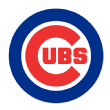 Cease has one of the biggest fastballs in pro baseball, possibly hitting 103 mph this summer and definitely hitting 101, but his arm is so quick that his body has a hard time catching up.
Cease has one of the biggest fastballs in pro baseball, possibly hitting 103 mph this summer and definitely hitting 101, but his arm is so quick that his body has a hard time catching up.
He was likely to be a top 10 pick in 2014, but he hurt his elbow in mid-March, didn’t pitch again before the draft and had Tommy John surgery after signing an over-slot deal with the Cubs after getting picked in the sixth round that year. He returned in 2015 for 24 innings, then was supposed to pitch a full summer in short-season in 2016 but missed time again with some minor soreness.
Cease has shown a plus breaking ball and would be fine pitching at 96-99 without trying to hit triple digits. He also has the athleticism and overall repertoire to start if he can stay healthy. This will be a big year for him in building stamina and learning to dial it down enough so that he can command the fastball better and, of course, stay off the DL. He has No. 1 starter stuff with the physique to match.
 85. Triston McKenzie, RHP, Cleveland Indians
85. Triston McKenzie, RHP, Cleveland Indians
Age: 19 (8/2/97) | B/T: R/R
Height: 6-5 | Weight: 165
Top level: Low-A | 2016: NR
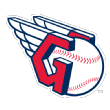 McKenzie was Cleveland’s second pick in 2015 after they took Brady Aiken (who saw his velocity drop in 2016) with their first selection. He was a highly projectable but skinny prep right-hander who scored very well on Statcast metrics such as the extension of his delivery out towards the plate.
McKenzie was Cleveland’s second pick in 2015 after they took Brady Aiken (who saw his velocity drop in 2016) with their first selection. He was a highly projectable but skinny prep right-hander who scored very well on Statcast metrics such as the extension of his delivery out towards the plate.
McKenzie pitches mostly at 90-92 mph but has touched 94, with at least another grade of fastball to come as he fills out. Between his 6-foot-5 frame and that extension out front, he gives hitters very little time to react to the pitch. He’s got some depth on an average curveball now and feel for a changeup -- enough so that even though he faced more left-handed batters than right in 2016 he had no appreciable platoon split.
He’s still more projection than present stuff, but the fact that he could dominate two levels at such a young age with so much more growth ahead points to his pure athleticism and advanced feel for pitching already. You could probably dream about him becoming an ace, although I’d probably set a realistic ceiling (90th percentile outcome) at a good No. 2, which assumes he continues to add muscle over the next three years.
 84. Justin Dunn, RHP, New York Mets
84. Justin Dunn, RHP, New York Mets
Age: 21 (9/22/95) | B/T: R/R
Height: 6-2 | Weight: 185
Top level: Short-season A-ball | 2016: NE
 Dunn started the spring in the Boston College bullpen and ended it as the 19th pick in the draft after moving to the Eagles’ rotation and touching the upper 90s. A young junior who didn’t turn 21 until September, Dunn has always had a good arm and is a tremendous athlete, but he didn’t throw this hard or throw many strikes until 2016. Between his freshman spring at BC and the Cape Cod League that summer, for example, he walked 26 guys in 28 innings.
Dunn started the spring in the Boston College bullpen and ended it as the 19th pick in the draft after moving to the Eagles’ rotation and touching the upper 90s. A young junior who didn’t turn 21 until September, Dunn has always had a good arm and is a tremendous athlete, but he didn’t throw this hard or throw many strikes until 2016. Between his freshman spring at BC and the Cape Cod League that summer, for example, he walked 26 guys in 28 innings.
Now Dunn is throwing 93-96 mph with plus life along with a plus changeup that might end up a 70 pitch, and he throws both for strikes. The breaking ball is the question mark, as he throws both a curve and slider with neither grading more than average or so. He’s also never started for very long -- 2016 was his max, with eight starts in college and eight after signing, which still left him throwing less than 100 innings on the season. He’s one of my picks to zoom up the list once he’s proved he can start over a full season.
 83. Riley Pint, RHP, Colorado Rockies
83. Riley Pint, RHP, Colorado Rockies
Age: 19 (11/6/97) | B/T: R/R
Height: 6-4 | Weight: 195
Top level: Rookie | 2016: NR
 Pint is the hardest-throwing high school kid I’ve personally seen in 15 years in the business and the only one to hit 100 mph on my own radar gun. He has a lightning-quick arm, and he can really hold upper 90s without too much trouble; catch him on the right day and you’ll see a 60 slider or, as I did, a 40 slider and an average (50) changeup. Although there’s some violence in his release, his arm swing itself is pretty clean, and I don’t think it’s a massive overhaul to get him to a delivery he can repeat. Although right now you’d grade his command 30, maybe.
Pint is the hardest-throwing high school kid I’ve personally seen in 15 years in the business and the only one to hit 100 mph on my own radar gun. He has a lightning-quick arm, and he can really hold upper 90s without too much trouble; catch him on the right day and you’ll see a 60 slider or, as I did, a 40 slider and an average (50) changeup. Although there’s some violence in his release, his arm swing itself is pretty clean, and I don’t think it’s a massive overhaul to get him to a delivery he can repeat. Although right now you’d grade his command 30, maybe.
He’s very athletic, and after he was worked hard as an underclassman, he pitched relatively infrequently the summer before his senior year of high school, a huge positive that I wish more kids would emulate. The Rockies took Pint fourth overall, perhaps feeling like his fastball plays up in their home park (and pitchers who rely on breaking balls might fare worse), also betting on his tremendous athleticism. Pint looks like a five-year development guy, but he has No. 1 starter upside, and might even get there if he comes down to 94-96 mph but starts to throw more strikes.
 82. Matt Manning, RHP, Detroit Tigers
82. Matt Manning, RHP, Detroit Tigers
Age: 19 (1/28/98) | B/T: R/R
Height: 6-6 | Weight: 190
Top level: Rookie | 2016: NE
 Manning is a typical Tigers draft pick -- a tall pitcher with a huge fastball -- but unlike some similar Detroit picks who haven’t panned out, Manning is a top-of-the-line athlete with limited pitching experience, so there are two good reasons to be optimistic about his development. Three reasons, even, if you count his GCL stats, where he punched out 46 guys in 29 innings against just seven walks.
Manning is a typical Tigers draft pick -- a tall pitcher with a huge fastball -- but unlike some similar Detroit picks who haven’t panned out, Manning is a top-of-the-line athlete with limited pitching experience, so there are two good reasons to be optimistic about his development. Three reasons, even, if you count his GCL stats, where he punched out 46 guys in 29 innings against just seven walks.
Manning’s one plus pitch is his 92-98 mph fastball, which is particularly good when he gets on top of it from his 6-foot-6 frame, although he doesn’t get there consistently yet. He has a breaking ball that works against bad hitters, but it’s a spike curveball that he probably won’t command and isn’t that sharp; he’d be better off with a true curve or a slider, and he had no real changeup to speak of in high school.
He’s all upside at this point, a great athlete blessed with a golden arm, but the Tigers have a lot of work to do, from figuring out his breaking ball to teaching him a changeup to helping him learn to pitch instead of just blowing guys away with velocity.
 81. Sean Newcomb, LHP, Atlanta Braves
81. Sean Newcomb, LHP, Atlanta Braves
Age: 24 (6/12/93) | B/T: L/L
Height: 6-5 | Weight: 255
Top level: Double-A | 2016: 30
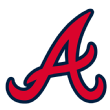 Newcomb is truly an enigma among prospects. He’s a lefty who can show three above-average or better pitches, has minimal effort in his delivery, but doesn’t have the control -- let alone the command -- to start, leaving him with no obvious way to get where he needs to go.
Newcomb is truly an enigma among prospects. He’s a lefty who can show three above-average or better pitches, has minimal effort in his delivery, but doesn’t have the control -- let alone the command -- to start, leaving him with no obvious way to get where he needs to go.
Newcomb touched 99 mph as a starter last year and will comfortably pitch at 93-95 mph. He also throws a curveball and changeup which both range from average to plus; he has thrown a slider in the past but stopped at some point after the Angels drafted him in 2014. Coming out of college, he looked like a potential No. 2 starter, but he needed to develop better command to get there. Two and a half years later, he’s the same guy, throwing a little harder, still durable as heck, but still not throwing enough strikes.
If I could look at the delivery and even think of what to fix, I’d be more confident in him getting to his ceiling, but Newcomb’s arm swing is so easy and loose that I can’t see what to do. He’s on this list because, good grief, lefties like this do not grow on trees, but my optimism about him from two years ago has faded.
